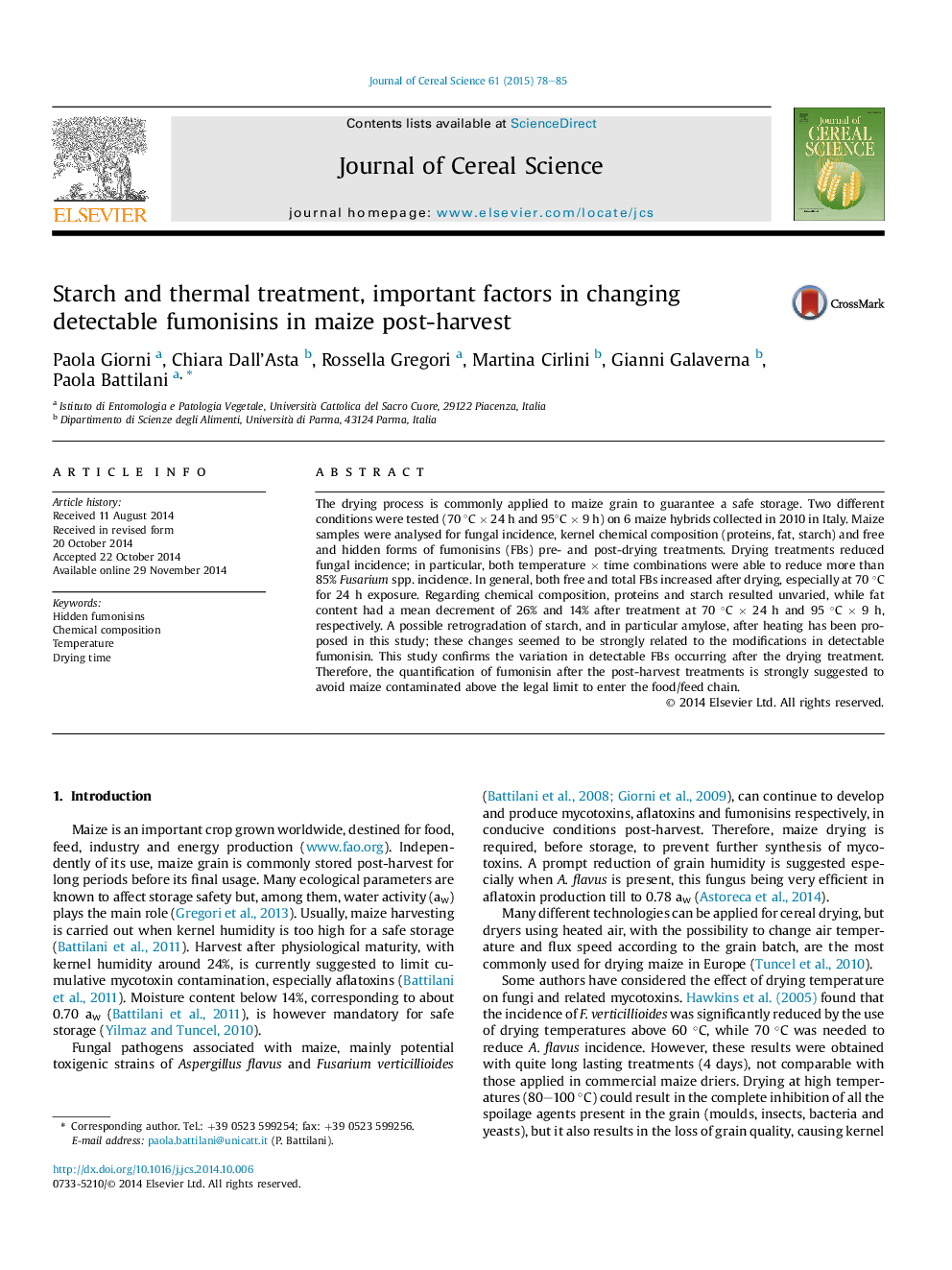| Article ID | Journal | Published Year | Pages | File Type |
|---|---|---|---|---|
| 4515703 | Journal of Cereal Science | 2015 | 8 Pages |
•Drying treatments induced modification in maize kernel chemical composition.•Drying treatments decreased Fusarium spp. incidence.•Free and hidden fumonisin content changed after drying treatment.•Drying duration was more effective than applied temperature on measured parameters.•A strong involvement of starch in post–thermal treatment changes is suggested.
The drying process is commonly applied to maize grain to guarantee a safe storage. Two different conditions were tested (70 °C × 24 h and 95°C × 9 h) on 6 maize hybrids collected in 2010 in Italy. Maize samples were analysed for fungal incidence, kernel chemical composition (proteins, fat, starch) and free and hidden forms of fumonisins (FBs) pre- and post-drying treatments. Drying treatments reduced fungal incidence; in particular, both temperature × time combinations were able to reduce more than 85% Fusarium spp. incidence. In general, both free and total FBs increased after drying, especially at 70 °C for 24 h exposure. Regarding chemical composition, proteins and starch resulted unvaried, while fat content had a mean decrement of 26% and 14% after treatment at 70 °C × 24 h and 95 °C × 9 h, respectively. A possible retrogradation of starch, and in particular amylose, after heating has been proposed in this study; these changes seemed to be strongly related to the modifications in detectable fumonisin. This study confirms the variation in detectable FBs occurring after the drying treatment. Therefore, the quantification of fumonisin after the post-harvest treatments is strongly suggested to avoid maize contaminated above the legal limit to enter the food/feed chain.
